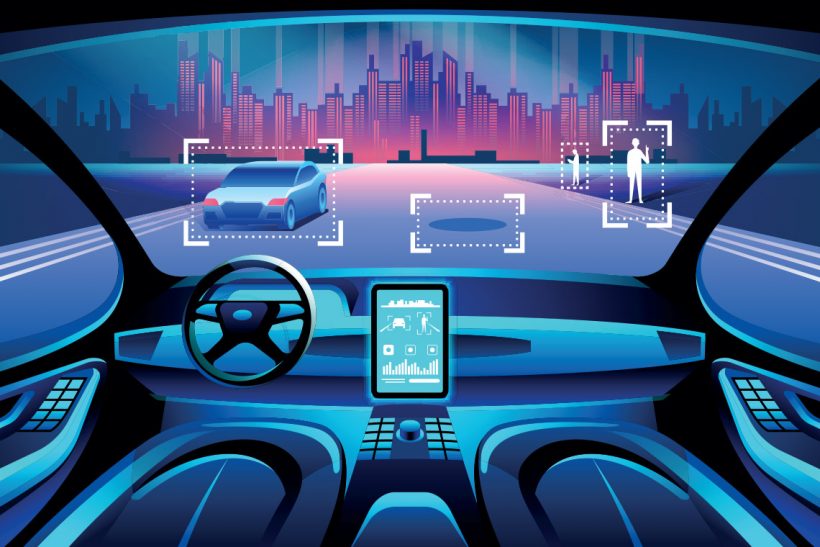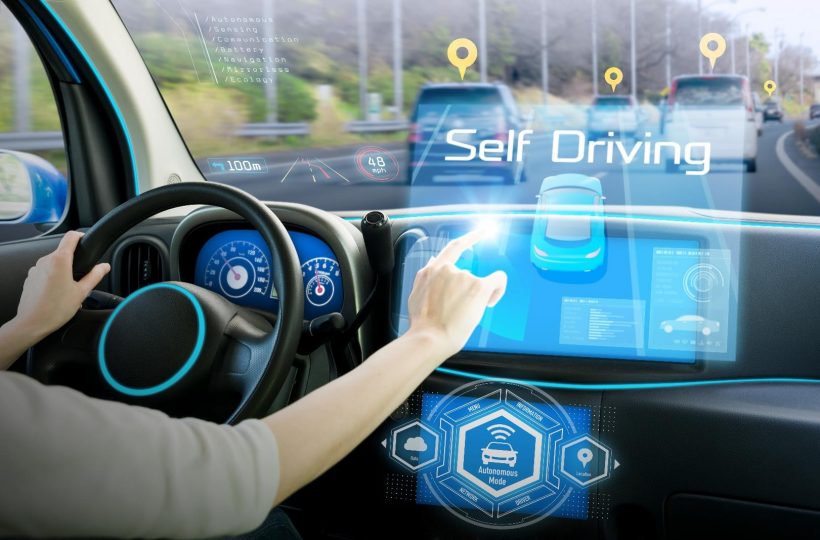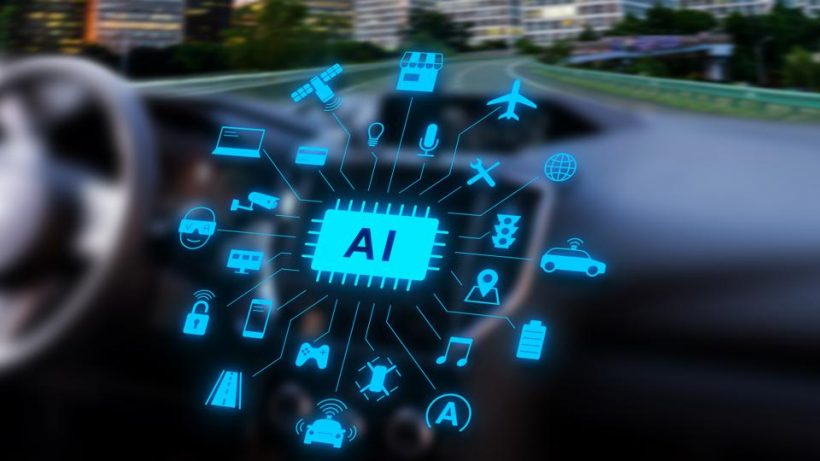Cars today are about user experience needing customization, high efficiency, requiring the least effort, and being very accessible. The utilization of AI or Artificial Intelligence in cars has seen a significant rise, with driven cars being replaced by smart, eco-friendly, and even driverless vehicles. The AI market in the automobile industry is predicted to cross 12 billion USD by the year 2026! Each day is now seeing newer and better innovations driven by AI and ML or Machine Learning, which together achieve a smart experience-friendly car or consumer vehicle.
The Role of AI in Cars

What is Artificial intelligence? The AI and ML domains are doing jobs in the automotive industry that require no human intervention and are set to take over a variety of existing manual jobs. Artificial Intelligence, or the technology of developing intelligent machines capable of mimicking human behavior and operations, is created using complex mathematical function-based algorithms that use ML to garner this capability.
AI in the automotive sector has two complimentary main categories. Namely, in-cabin sensing and driving automation. Let us study these categories in brief.
Driving Automation

Driving automation includes the five levels of control which classify the automation control levels from driver support to full automation, which are:
- Driver assistance or Level-1: This level includes functions that support the driver like parking assistance, warnings, and adaptive cruise control facility. AI here plays a supportive role and does not take over the controls from the driver providing comfort and additional safety. Today, cars and consumer vehicles classified as level 1 are the most common cars and brands on the Indian roads.
- Partial automation or Level-2: Cars with such AI systems have ADAS or Advanced Driver Assistance System. This takes partial control of the driving process and controls the way the car accelerates, brakes, or steers. The AI system still needs the driver to remain at the wheel and stay alert. Functions like active lane-keep assistance, adaptive cruise control, automatic emergency braking, etc., need to be coordinated by the driver. For example, AI systems powering the Mercedes-Benz Distronic Plus, the Tesla Autopilot, the Nissan’s ProPilot system, or the Cadillac’s Super Cruise features in cars.
- Conditional automation or Level-3: In level- 3 cars, the AI does most of the driving chores and can drive on motorways with specific traffic conditions in auto modes or autonomously. This allows the driver to use the phone, watch a movie, etc. Yet, it is not entirely automatic and needs the driver to quickly take the steering when prompted. The driver monitoring system and an alert driver are crucial elements in such cars. For example, the Audi A8 with its “eyes-off” mode and Traffic Jam Pilot, still being unapproved in many countries, is yet to be widely accepted.
- High automation or Level-4: Level 4 cars can drive themselves in complex situations using the self-drive mode. Cars with level-4 automation still have a traditional steering control allowing a self-drive override to drive manually. For example, Google’s Waymo project for an autonomous taxi service still has a human driver.
- Full automation or Level-5: Such cars are entirely automated for all traffic conditions and do not need a driver in the car. All people in the car are passengers, and no brake pedals or the steering wheel is present.
At present, the process of automation from level 3 to 5 cars is still being refined in AIML classrooms and real-world situations to include unpredicted and unexpected situations in fully automated cars.
In-cabin Sensing

Self-driving cars will come, albeit slowly. Until such a time, AI systems will continue learning how to keep us comfortable, safe, and entertained in the car. The ADAS or advanced driver-assistance systems, along with the in-cabin sensing solutions, collect passenger and driver information to be able to support and personalize safety features, entertainment options, and the in-cabin environment solutions based on the passenger needs.
This category can further be divided into three main areas discussed below:
DMS or Driver Monitoring System:
This AI system attempts to avoid the risk of human errors, which cause a majority of car accidents, by analyzing and monitoring the driver’s facial features in real-time. The AI uses facial recognition, head and face tracking, emotion, age, gender recognition, attention level, viewing direction, etc., to improve the safety levels and user experience. If any of these parameters indicate a deviation from the standard parameters, the car issues a warning, provides alternate routes, and slows down the vehicle.
Tracking driver biometrics helps verify the authorized driver and prevents theft. If the driver allows anyone else to drive the car, the owner is notified immediately. AI can also remember the entertainment setting preferences, adjust seats automatically, control the temperature in the cabin, allow car restrictions on speed and time if children are learning to drive, etc.
Occupant Monitoring:
AI uses the passenger monitoring system or PMS in automatic and semi-automatic cars, which is similar to the DMS system described above but expands its range to include the passengers too. This allows the system to adjust the preferences and position of safety features like the airbags, their relative positions to the driver, etc., to be able to detect and control the in-cabin environment better. For example, when a child or pet is traveling alone in the back seat, it warns the driver that the child-lock or seat belts are not fastened; prevent minors from driving the car, block adult content on the entertainment system, etc.
AI Partners Automated Driving:

AI’s driver/passenger monitoring systems are the main pivots in a transition to automated driving from manual driving. It is crucial then that the AI and ML used in such systems have reliable software. In the ultimate quest for it, software engineering experts are able to exploit ML and AI gainfully.
Jobs that are AI and ML certification based:
Some of the lucrative jobs you can land with an AI certification are
- AI Analyst
- Data Architect
- Data Scientist
- Data Engineer
- Data Manager
- Machine Learning Engineer
- Machine Learning Specialist
- BigQuery Engineer
- Data Mining Specialists
- Clinical Intelligence Analyst
- Advanced Analytics Engineer
The last word

Artificial Intelligence is used across almost all facets of modern life, be it social media, smartphones, healthcare, banking, surveillance, video games, smart cars, and more. Utilizing AI in cars is one of the most promising areas for AI, with carmakers already deploying it in various forms, even if it’s limited. This sector is poised to grow further in the coming years. If you find this interesting and are ready to exploit your true potential in ML and AI, then learning AI can definitely improve your career prospects. Great Learning offers online AI and machine learning courses conducted for your convenience.
Basic prerequisites needed:
To enroll in AI and machine learning courses, you would need a technical background with knowledge of:
- Programming Languages like the very popular Python, C, Java, R, etc., are the primary languages used by the software to communicate with machines or cars.
- Statistics and Mathematics knowledge of concepts, fair knowledge of statistics, calculus, probability, and more, to learn the technologies of AI and ML.
- Data Visualization Tools such as Microsoft Power BI, Tableau, etc.
- Your own laptop.

